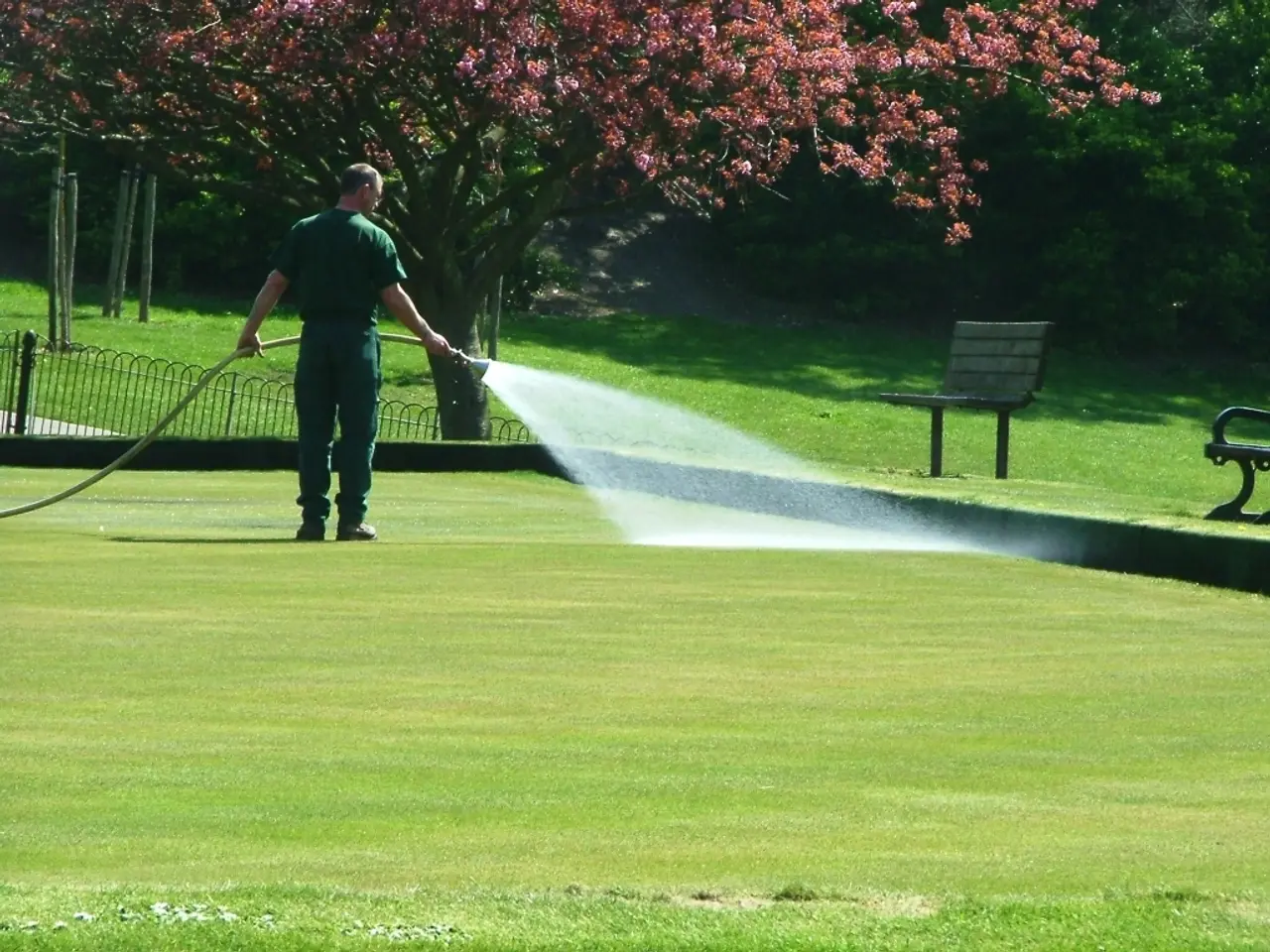Enhance Water Distribution for Expert Landscaping through Commercial Soaker Hoses
Soaker hoses are becoming increasingly popular among gardeners for their eco-friendly and efficient watering methods. Glen, a seasoned gardener with over 15 years of experience, prefers hoses made from recycled tires or flexible rubber for their resilience and alignment with eco-friendly practices.
Integration and Installation
To integrate soaker hoses into your garden, start by connecting them to an outdoor faucet using basic components such as a Y-connector, a vacuum breaker, a flushable filter, and optionally a timer for automation. Lay the hose at least 1 to 2 inches from the base of established plants, and for new plants or annuals, place it closer and adjust as they grow.
The spacing of soaker hoses depends on the soil type: in sandy soil, space hoses 12 to 18 inches apart, while in loam or clay soils, 18 to 20 inches apart ensures even moisture distribution. Avoid burying soaker hoses as this can cause clogging; instead, cover them with 2–3 inches of mulch to reduce evaporation, protect the hose from sun damage, and disguise it.
Watering Technique
Use low water pressure to maintain a slow, steady drip rather than a spray. Too much pressure reduces efficiency. Adjust the faucet flow so water seeps evenly along the hose length without runoff. Watering at the root zone minimizes leaf diseases and promotes healthy root growth while conserving water compared to overhead sprinklers.
Maintenance
Maintenance is crucial for the longevity of your soaker hose system. Flush the hose system at the start of the watering season by removing end caps and running water for about 30 seconds to clear debris. Check and clean filters regularly, especially in spring start-up and fall shutdown procedures to prevent clogs and damage from freezing in cold climates.
Inspect the hose monthly during the season for leaks, blockages, or damage. Seasonal draining or storage of removable parts helps prolong system life. Replace or repair damaged sections promptly, noting that soaker hoses can be difficult to repair if severely damaged.
Additional Water-Saving Measures
Combine soaker hoses with rain barrels or other rainwater harvesting techniques to reduce municipal water use. Incorporate smart irrigation controllers or moisture sensors to automate watering schedules based on actual soil moisture and weather data, further preventing overwatering.
Following these best practices ensures efficient water delivery, healthier plants, water conservation, and reduced maintenance effort in your garden irrigation with soaker hoses.
Soaker hoses promote deeper root growth and strengthen plants against drought and disease. They are made of strong materials and can accommodate gardens of any shape and size without compromising durability or effectiveness. Soaker hoses deliver water directly to the base of plants, reducing the possibility of mold and fungal diseases.
Glen recommends soaker hoses made in the USA for quality and safety, with lead-free brass fittings. Soaker hoses provide benefits such as water conservation, healthier plant growth, and customization. They are useful for watering long rows of plants or densely planted beds, ensuring even moisture without the labor of hand-watering or the waste of overhead sprinklers.
For efficient gardening and water conservation, best practices to integrate and maintain a soaker hose include careful setup, correct spacing, controlled water pressure, protective covering, and regular upkeep.
Incorporate soaker hoses in your home-and-garden lifestyle by strategically placing them alongside your home-and-garden arrangements, ensuring a healthy lifestyle for your plants while promoting water conservation. Maintaining a soaker hose system involves regular flushing, cleaning filters, monthly inspections for leaks or damage, and proper storage or draining during off-seasons to extend its lifespan. This eco-friendly home-and-gardening tool also includes benefits such as deeper root growth, reduced mold and fungal diseases, and the ability to water long rows or densely planted beds efficiently.




